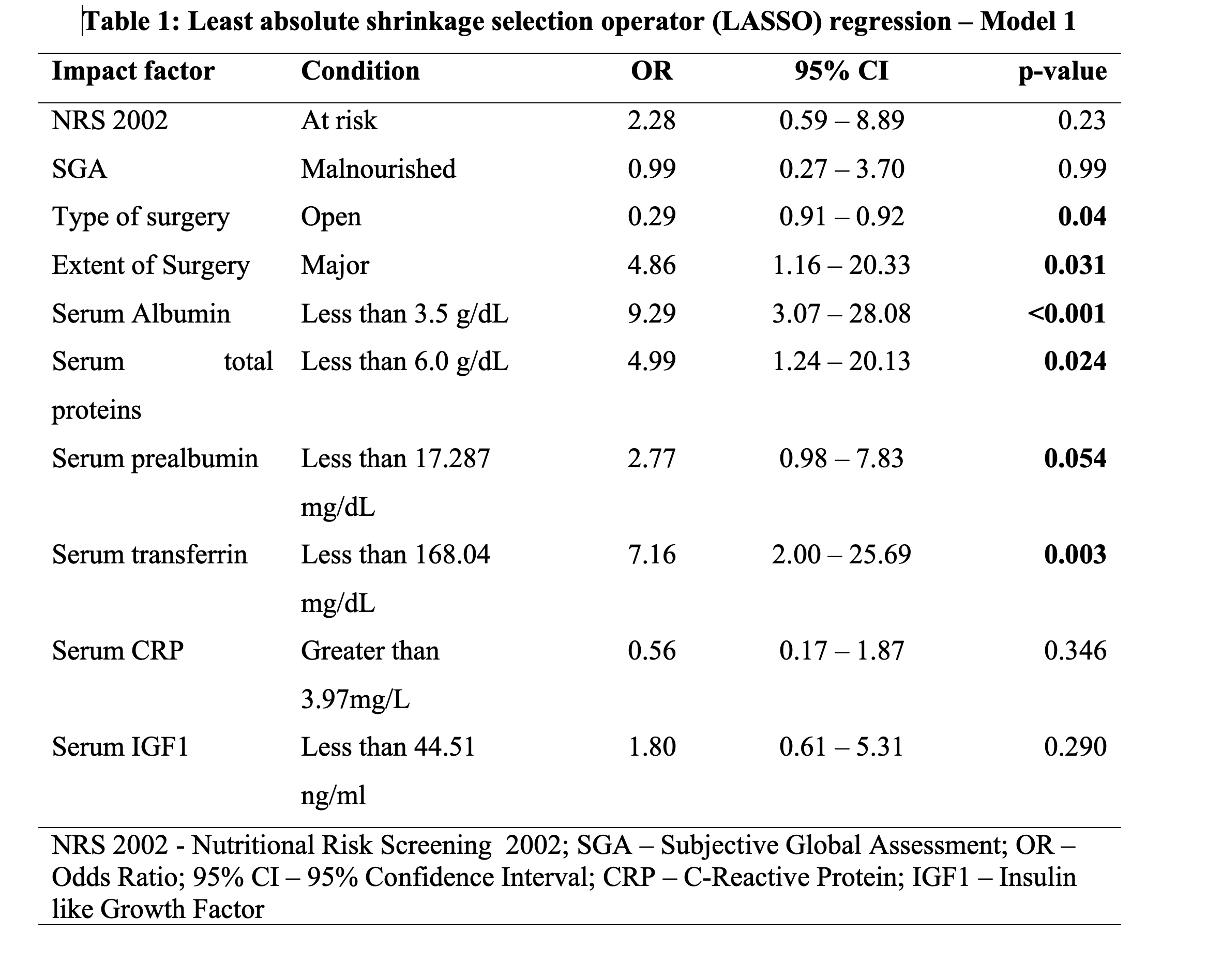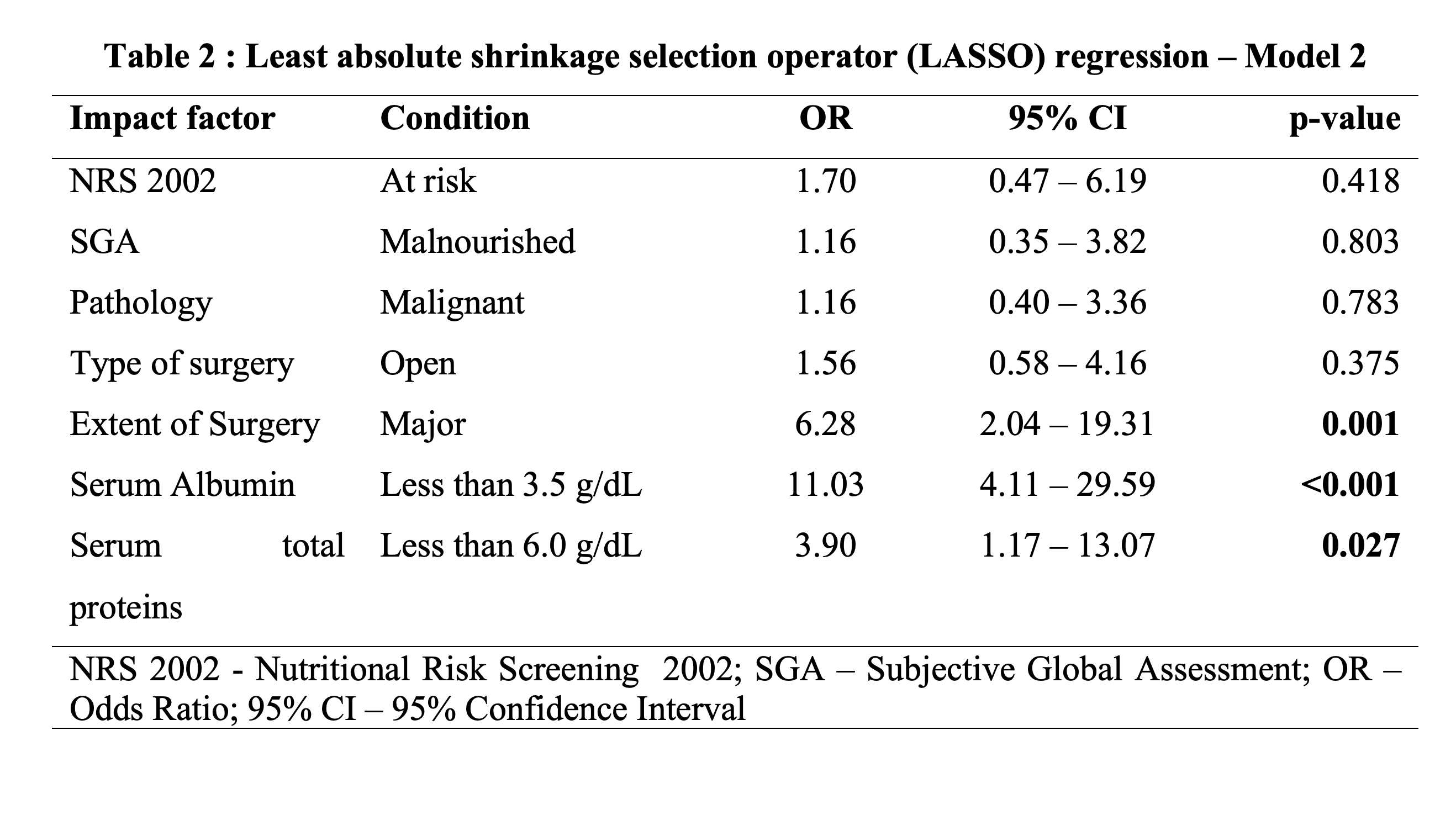Back to 2024 Abstracts
DEVELOPMENT OF NUTRITIONAL RISK ASSESSMENT MODELS USING LEAST ABSOLUTE SHRINKAGE SELECTION OPERATOR FOR PREDICTING POSTOPERATIVE COMPLICATIONS AMONG PATIENTS UNDERGOING ELECTIVE ABDOMINAL SURGERY
Vikram Kate
*1, Hemamalini Raghuraman
1, Gurushankari Balakrishnan
2, Rajalekshmy R. Mini
1, Elamurugan TP
1, Thulasingam Mahalakshmy
3, Nivedita Nanda
4, Rajesh Nachiappa Ganesh
5, Gomathi Shankar
1, Yuvaraj Krishnamoorthy
31Department of Surgery, Jawaharlal Institute of Postgraduate Medical Education and Research, Pondicherry, India; 2Department of Surgical Oncology, Cancer institute (WIA), Adyar, Chennai, India; 3Department of Preventive and Social Medicine, Jawaharlal Institute of Postgraduate Medical Education and Research, Pondicherry, India; 4Department of Biochemistry, Jawaharlal Institute of Postgraduate Medical Education and Research, Pondicherry, India; 5Department of Pathology, Jawaharlal Institute of Postgraduate Medical Education and Research, Pondicherry, India
Introduction: Various factors impact postoperative outcomes among patients who undergo elective abdominal surgery. Malnutrition is a crucial component that has a considerable impact on postoperative complications. Nutrition risk assessment models were developed using the highly advanced Least absolute Shrinkage Selection Operator (LASSO) regression method. The study evaluated how well these models could predict postoperative complications.
Methods: This prospective cohort study was carried out in a tertiary care hospital. The study included all patients aged 18 years and above who were consecutively admitted for elective abdominal surgery. The primary outcome assessed was the occurrence of postoperative complications till discharge using Clavien-Dindo's classification. The efficiency of the two LASSO regression-based models was evaluated.
Results: The first model included socio-demographic, anthropometric, clinical variables, nutrition risk assessment tools, routine and specific biomarkers. The selected variables of the first model were NRS 2002, SGA, type of surgery, extent of surgery, serum albumin, total proteins, prealbumin, transferrin, CRP and IGF1. The second model incorporated all the predictors except specific biomarkers. NRS 2002, SGA, pathology, type of surgery, the extent of operation, serum albumin, and serum total proteins were the variables chosen for the second model by LASSO regression. The model-based nomogram scores showed an AUC of 0.9437 at 87.30 % sensitivity and 86.08 % specificity at a cut-off score of 20.3 for model 1 (Table 1). Similarly, the AUC was 0.9294 at 88.89 % sensitivity and 82.47 % specificity at a cut-off score of 10.5 for model 2 (Table 2).
Conclusion: We found that LASSO regression-based models predict postoperative complications in patients who undergo elective abdominal surgeries with a good efficacy. These models may enable preoperative corrective efforts, which can aid in the reduction of postoperative complications

Table 1.

Back to 2024 Abstracts

